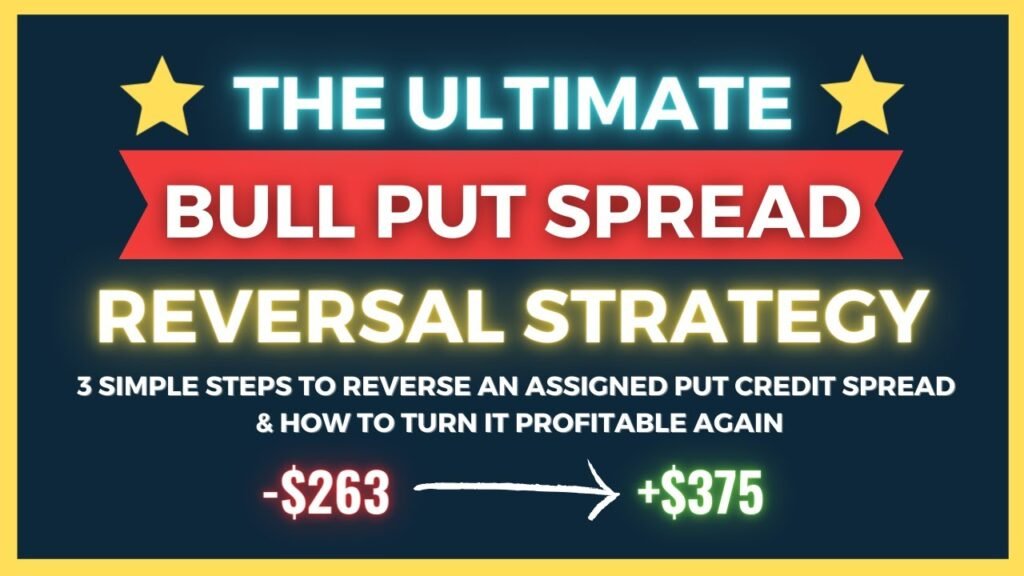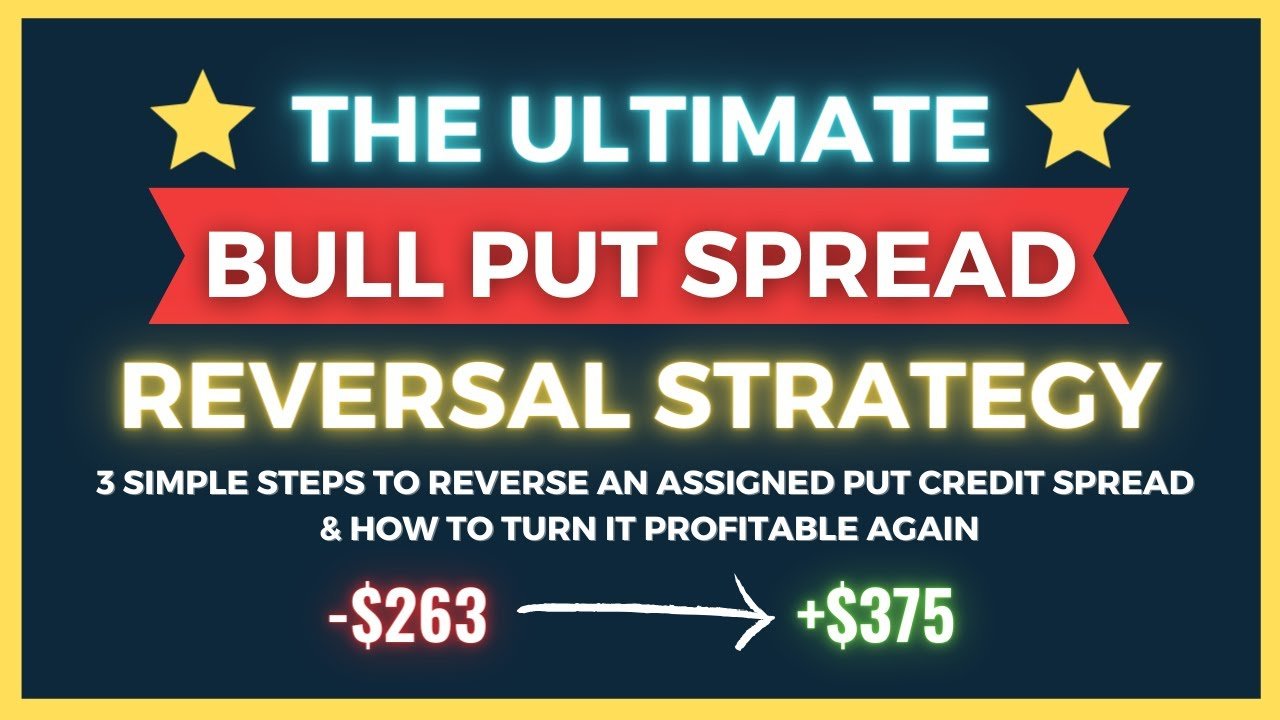In the video “The Bull Put Spread Assignment Reversal Strategy” by Options with Davis, you will learn how to reverse an assignment and reinstate your original position on a Bull Put Spread. The video covers various topics such as high-probability consistent income strategies and recurring profits with the Wheel Strategy. The strategy involves three simple steps to unwind the put credit spread assignment. It also provides insights on preventing early assignment, considerations for exercising the long put option, and options after unwinding the assignment. With this informative video, you will gain the knowledge and confidence to navigate the bull put spread assignment process effectively.
If you’ve ever been assigned on your credit spreads, particularly your bull put spread, this video is perfect for you. Options with Davis presents the Bull Put Spread Assignment Reversal Strategy, which consists of three easy steps to unwind the assignment and reinstate your original position. You’ll also discover prevention techniques for early assignment and explore options after unwinding the assignment. With the valuable insights shared in this video, you’ll be equipped to confidently handle the assignment process on your put spreads. Don’t miss out on the opportunity to learn and improve your options trading strategies.
The Bull Put Spread Assignment Reversal Strategy
The Bull Put Spread Assignment Reversal Strategy is a technique used to reverse assignment and reinstate the original position in a Bull Put Spread. In a video by Options with Davis, this strategy is explained along with other related topics.
Three Steps to Unwind the Put Credit Spread Assignment
When faced with assignment on a Bull Put Spread, there are three simple steps to unwind the assignment:
Step 1: Sell Off 100 Shares to Avoid Margin Call
The first step involves selling off 100 shares to avoid a margin call. When assigned on a Bull Put Spread, the trader will be long 100 shares at the short put leg strike price. If they don’t have sufficient funds to buy the 100 shares, they may receive a margin call. Selling off the shares eliminates the risk of a margin call.
Step 2: Sell the Original Short Put Strike Price to Reestablish Put Spread
After selling off the 100 shares, the trader needs to sell the original short put strike price to reestablish the Bull Put Spread. This step allows the trader to reinstate their original position and continue trading.
Step 3: Unwind Assignment and Sell Original Strike Simultaneously
The final step involves unwinding the assignment and selling the original strike price simultaneously. By doing this in one order ticket, the trader avoids lagging risk and ensures that the market price and the strike price move together.
Options After Unwinding Assignment
After unwinding the assignment on a Bull Put Spread, traders have two options:
Option 1: Roll to a Further Expiration Date
One option is to roll the position to a further expiration date. This allows the trader to extend the timeframe of the trade and potentially recover from losses.
Option 2: Close Out for a Lesser Loss
Another option is to close out the position for a lesser loss. This may be a viable option if the trader wants to limit further losses and move on to new trading opportunities.

Prevention of Early Assignment
To prevent early assignment on a Bull Put Spread, traders can consider the following strategies:
Exit at 21 Days to Expiration
Exiting the position at 21 days to expiration reduces the risk of early assignment. This is because assignment is more likely when there is little extrinsic value left in the short put leg, which typically occurs closer to expiration.
Trade Cash-Settled Index Options
Trading cash-settled index options eliminates the risk of early assignment. Unlike stock options, cash-settled index options cannot be exercised early. This can provide traders with peace of mind and eliminate the need to worry about assignment.
Assignment on a Bull Put Spread
Assignment on a Bull Put Spread occurs when the short put leg goes in the money. This means that the price of the underlying asset has fallen below the strike price of the short put option. Assignment typically happens when the extrinsic value of the short put leg is low and close to expiration.
Understanding Early Assignment
Early assignment refers to the assignment of an option contract before its expiration date. In the context of a Bull Put Spread, early assignment is more likely when the extrinsic value of the short put leg is low and close to expiration. The extrinsic value represents the time value of the option and decreases as it gets closer to expiration. When the extrinsic value is low, the risk of early assignment increases.
Consequences of Assignment
When assigned on a Bull Put Spread, the trader becomes long 100 shares at the short put leg strike price. They also retain the long put option. However, if the trader doesn’t have sufficient funds to buy the 100 shares, they may receive a margin call. It is important to manage the risk of a margin call and have enough funds in the trading account to cover any potential assignments.
Exercising the Long Put Option
If the trader decides to exercise the long put option, certain conditions must be met. The market price must have gone below the long put strike price, allowing the trader to sell 100 shares at the strike price. It is important to consider the current market price when deciding whether to exercise the long put option, as exercising may result in additional losses if the market price is higher than the strike price.
Unwinding an Assignment on a Bull Put Spread
To unwind an assignment on a Bull Put Spread, the trader follows the three steps mentioned earlier: selling off 100 shares to avoid a margin call, selling the original short put strike price to reestablish the put spread, and unwinding the assignment and selling the original strike simultaneously. By following these steps, the trader can reverse the assignment and continue trading.
In conclusion, the Bull Put Spread Assignment Reversal Strategy is a valuable technique for traders facing assignment on a Bull Put Spread. By understanding the steps to unwind the assignment and managing the risk of early assignment, traders can navigate these situations effectively. It is essential to consider the available options after unwinding the assignment and to employ preventive measures, such as exiting positions at the appropriate time and trading cash-settled index options.
